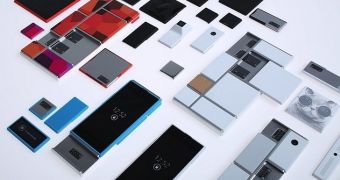If you've heard about Project ARA, you might know that Google hopes for the first modular smartphone to come out in 2015, and that the idea is being extended to gadgets. We now know that 3D Systems has become involved in the plans.
In case you're not familiar with the company, 3D Systems is one of the greatest names in the 3D printing industry right now.
You can probably already guess where we're going with this: 3D Systems has been asked, or offered, to help make the Ara smartphone.
You see, the phone is supposed to be made of several different, attachable and detachable parts. It should also support accessories that Google will eventually release specifically for it.
Project Ara is basically like a really smart, electronic puzzle box that you could always add more pieces to. Like an open-ended puzzle project, of sorts.
3D printing technology is supposed to help with manufacturing, though probably not to the extent that you're imagining.
It's still impossible to create functioning electronics via 3D printing, the same way it's impossible to make organs or anything too complex.
Well, there is that odd little speaker to consider, and it looks like there is one type of full-color 3D printing technology that can reproduce paintings down to the final brush stroke, but even those aren't truly exceptions.
Anyway, 3D Systems will print parts of the parts, in a manner of speaking. Like antennas. Researchers from Carnegie Mellon University and X5 Systems are helping out with that.
X5 might have a lot to contribute, more so, perhaps, than CMU. Its AntSyn technology (antenna synthesis shortened) uses artificial intelligence software (or something that passes for it) to automatically design antennas based on parameters inputted in the program (frequency characteristics, materials, etc.).
With X5 developing the software model, 3D Systems should have an easy time turning the ideas into physical items. And since the AntSyn technology can run virtual simulations on designs, the trial-and-error stage involving the finished prototypes should be a minor matter.
Still, a 3D printing technology capable of creating antennas, or whatever else, doesn't truly exist right now, which is why 3D systems is designing it. Something that will be a “continuous, high-speed 3D printing production platform and fulfillment system to accommodate production-level speeds and volume.”
“The combination of exponential creation technology with exponential information technology translates to unprecedented capability and adaptability for the consumer,” said Chuck Hull, Founder and Chief Technology Officer of 3DS. “The scale of this project and its practical functionality are an exciting step into the future.”

 14 DAY TRIAL //
14 DAY TRIAL //